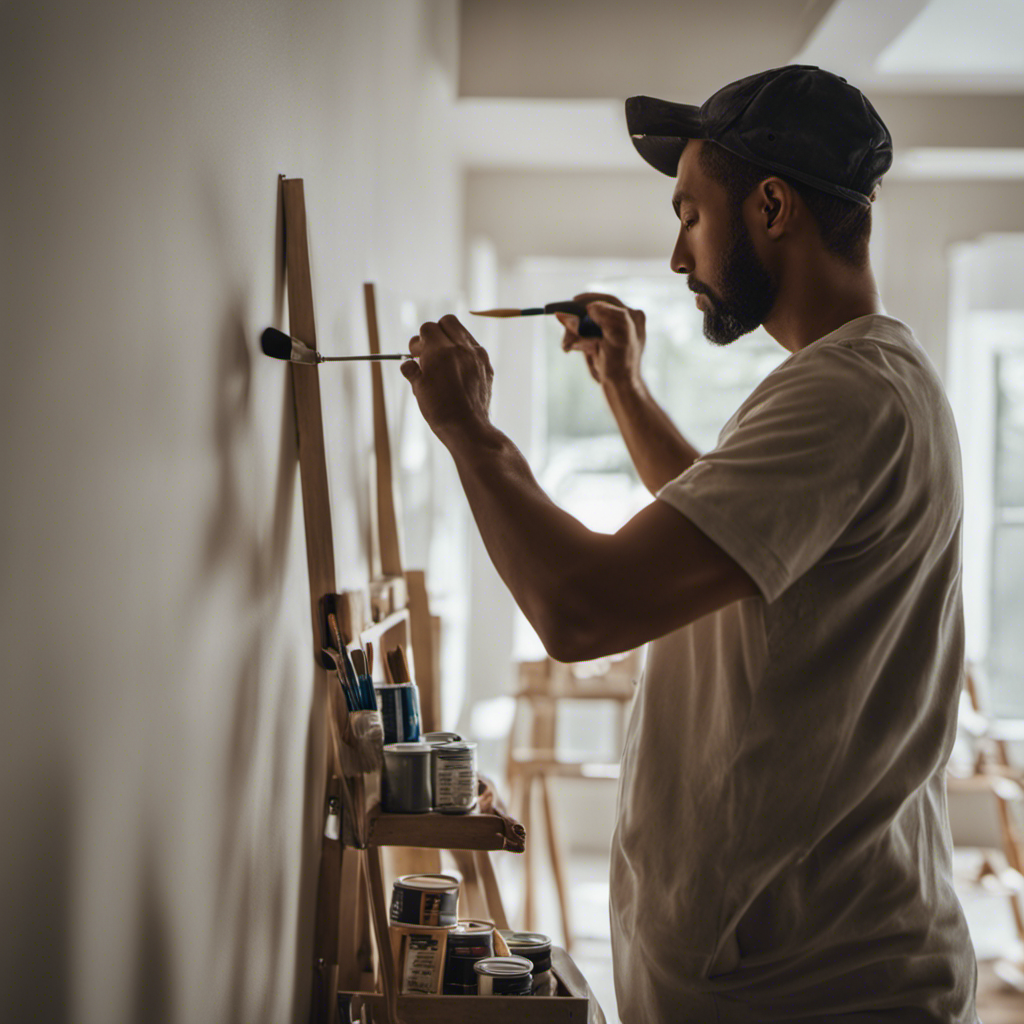Phone:
(701)814-6992
Physical address:
6296 Donnelly Plaza
Ratkeville, Bahamas.
40 Years still going strong
40 Years still going strong

Looking to tackle a painting project in York? Look no further! In this article, we’ve got the pro tips you need to achieve perfect results.
From choosing the right paint colors to prepping your surfaces and using the essential tools, we’ll guide you through every step.
Plus, we’ll share techniques for a smooth and even finish and offer tips to make your painting process efficient and clean.
Get ready to transform your space with these expert tips!
You should start by narrowing down your options and trying out different paint colors before settling on the right one for your project. Color psychology plays an important role in interior design as different colors can have a significant impact on mood and emotions.
For example, warm colors like red and orange can create a cozy and inviting atmosphere, while cool colors like blue and green can promote relaxation and calmness. Consider the overall vibe you want to achieve in your space and choose a color that aligns with that.
Additionally, it’s crucial to select the right paint finish for different surfaces. Matte finishes work well for walls and ceilings, while satin or semi-gloss finishes are suitable for trim and doors. Understanding how different paint finishes interact with surfaces will ensure a professional and polished result.
Before beginning your painting project, make sure to thoroughly clean and prime your surfaces to ensure a smooth and long-lasting finish. Here are three essential steps to prepare your surfaces for painting:
Surface cleaning and priming: Start by cleaning your surfaces with a mild detergent and water to remove dirt, grease, and grime. Allow them to dry completely before applying a primer. Priming helps the paint adhere better and provides a uniform surface for a flawless finish.
Repairing and filling cracks: Inspect your surfaces for any cracks or holes and repair them using a suitable filler. Smooth out the filler and let it dry completely before sanding it down to create a seamless surface. This step ensures that your paint job looks professional and hides any imperfections.
Sanding and smoothing: Use sandpaper to smooth out any rough spots or uneven surfaces. Sanding helps the paint adhere better and creates a uniform finish. Wipe away the dust with a clean cloth before moving on to the painting stage.
To ensure a successful painting project, gather your essential tools and equipment, such as brushes, rollers, drop cloths, and paint trays.
Proper maintenance of your paintbrushes is crucial for achieving professional results. After each use, clean your brushes thoroughly with warm, soapy water to remove any leftover paint. For brushes with dried paint, use a brush comb or wire brush to remove the hardened paint. Hang your brushes upside down to dry, ensuring the bristles remain straight and in good condition.
Additionally, remember to take safety precautions when painting. Wear protective goggles to shield your eyes from paint splatters, and use a respirator mask to avoid inhaling harmful fumes.
Lastly, always work in a well-ventilated area to minimize exposure to paint fumes.
For a consistently smooth and even paint finish, always mix your paint thoroughly and apply multiple thin coats. This ensures that the color is evenly distributed and prevents any streaks or unevenness.
Here are three techniques that will help you achieve a flawless brush stroke technique and prevent paint drips and splatters:
Use a high-quality brush: Invest in a brush with fine bristles that will give you better control and smoother application. This will help you achieve clean and precise brush strokes.
Apply paint in a W or M motion: Start by painting in one direction, then switch to the opposite direction to create a crosshatch pattern. This technique helps to evenly distribute the paint and minimize any visible brush strokes.
Use a paint extender: Adding a paint extender to your paint can help slow down the drying process, allowing for smoother application and reducing the chances of drips and splatters.
With these tips, you can streamline your painting process and keep it clean and efficient. Two important aspects of a clean and efficient painting process are cleaning brushes and protecting furniture. Cleaning your brushes properly ensures their longevity and maintains the quality of your paintwork. After painting, rinse your brushes with warm water and mild soap until the water runs clear. Then, gently reshape the bristles and let them air dry. To protect your furniture from paint splatters and drips, cover them with plastic sheets or drop cloths. Additionally, use masking tape to secure the edges and corners. This will save you time and effort in cleaning up later. By following these tips, you can achieve a clean and efficient painting process.
| TIPS FOR EFFICIENT AND CLEAN PAINTING PROCESS |
|---|
| Clean your brushes properly |
| Protect furniture from paint splatters and drips |
You should wait until the first coat is completely dry before applying a second coat of paint. This ensures a smooth and even finish. The best paintbrush to use depends on the type of paint you are using.
Yes, you can use the same paintbrush for both latex and oil-based paints. However, it’s important to properly clean and maintain your paintbrush to avoid any residue or color mixing. Remember to choose the right paintbrush for each type of paint.
To properly clean and prepare a previously painted surface, choose the right primer based on the type of paint you will use. This will ensure a flawless finish and help the new paint color adhere properly.
You should sand the entire surface before painting, not just the areas with peeling paint. This will help achieve a smooth surface and ensure better adhesion for the new paint.
To prevent paint drips and brush marks on your walls, follow these tips for achieving a smooth finish. Use a high-quality brush or roller, apply thin coats of paint, and maintain a consistent pressure while painting.